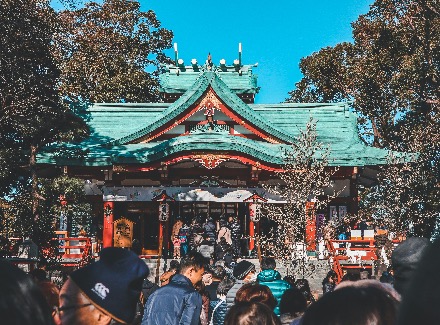Do you want to impress your Japanese friends or coworkers during your internship in Japan? Make sure to bring them a present, also known as omiyage! (おみやげ) From regional snacks to traditional crafts, omiyage is a way for travelers to bring a piece of their journey home with them. We’ll tell you everything you need to know about the Japanese act of gift-giving.

What is Japanese omiyage?
Omiyage are gifts or small tokens that people bring back from a trip or event. It literally translates to ‘souvenirs’, but the meaning is slightly different. Unlike souvenirs that you buy to keep for yourself, omiyage are meant to share the experience of the trip with others. The practice of bringing omiyage as gifts for friends, family and coworkers is a longstanding tradition in Japan, and key to building a long lasting relationship.
As it is considered polite to bring back something from a trip, many Japanese people will purchase omiyage when they travel to another prefecture, as well as when they go on vacation abroad. Omiyage can range from traditional Japanese items such as tea, sake, and sweets, to handcrafted pottery and textiles. The gifts are often food items or local crafts that showcase the unique culture and customs of the region visited. Some popular types of omiyage include regional specialties such as mochi from Kyoto, or seafood from Hokkaido.

The origin of omiyage
It’s unclear what the exact origin of omiyage is, but it traces back to the Edo period (17th-19th century). It is believed that the tradition is connected with sacred pilgrimages that visited Shinto shrines. The pilgrimages had to return to their families with proof of their visits, in the form of charms, rice wine cups, or other religious items. It was believed that the blessings received by the pilgrims during their journey would be transferred to whoever received the items brought back from the holy trip. This is considered to be the origin of the omiyage tradition.
Today, the tradition of omiyage continues to be a popular practice in Japan, and it is still common for people to bring back gifts from their travels to share with friends, family and coworkers. By giving omiyage, you show appreciation, gratitude, and respect to the people who have hosted you or whom you have visited. It’s also a way of keeping the memory of your journey alive by sharing a piece of it with the people you care about.

Where can you buy omiyage?
Now you know what exactly omiyage is, the next question is where to buy it. Japanese omiyage can be purchased in a variety of places, depending on the specific item you are looking for. Some popular options include:
- Convenience stores
Many Japanese convenience stores, such as 7-Eleven or Lawson, have a section dedicated to omiyage, where you can find a wide variety of regional snacks, confections, and other food items. Also stores like Daiso or Don Quijote sell these items.
- Department stores
In department stores such as Loft and Tokyu Hands, you can find assorted local crafts, traditional items, and other souvenirs. If you’re looking for fancier, more expensive omiyage, take a look at stores like Mitsukoshi or Isetan.
- Speciality stores
In many tourist areas, such as Kyoto or Hiroshima, there are specialty stores that sell only omiyage. These stores often have a selection of items from the region, including food, crafts, and other souvenirs.
- Local markets
Some local markets in Japan, like Tsukiji fish market in Tokyo, will also have omiyage for sale. These tend to be more authentic, less commercial and often cheaper than the ones you find in department stores.
- Online
In recent years, many online retailers have started to sell Japanese omiyage. These are specially useful if you are looking for a specific item or if you live abroad.
Do’s and don'ts
Did you know there is an etiquette to receiving and giving omiyage? To avoid accidentally offending your friend or coworker, it’s important to understand Japan’s gift giving culture. Here are the do’s and don’ts:
- Unlucky numbers
Also, keep in mind that the number four is an unlucky number in Japanese culture. This is because the words ‘death’ and ‘four’ are pronounced in a similar way: “shi.”. It’s best to give presents in sets of five, as this is a lucky number.
- Home-made is a no go
As omiyage represents a gift from your travels, it’s considered rude if you bring something home-made. The reason is because home-made gifts are not related to your trip.
- Wrap it nicely
Always wrap your omiyage in nice packaging, as the outside appearance of the omiyage is as important as the gift itself. The way you wrap your omiyage says a lot about how much you care for the recipient. Japanese people often put a lot of thought and care into the packaging of the omiyage, making sure it looks neat. Giving an omiyage unwrapped is considered impolite.
- Say the right things
Are you giving an omiyage to a friend or coworker? The most important thing to keep in mind is to be humble about your gift. Downplay it, by saying: “I hope you like it,” or “It’s not much, but…” Sounding too confident comes across as arrogant and might leave a bad impression. Make sure to be resistant, as it’s tradition to reject a gift in Japan. You don’t want to take no for an answer.
If you want to impress your Japanese friends or colleagues during your internship in Japan, be sure to give them some omiyage, preferably from your home country. You’ll definitely leave a good impression!







